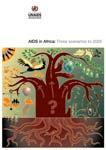Health Risk
Human society is only as healthy as the health of its citizens
Today, the rising costs and complexity of products and healthcare, combined with demographic pressures and growing public expectations impact health provision in the developed world, yet many of these issues affect the developing world too.
We have identified several key issues central to understanding health risk, namely:
- How best to allocate limited resources between the health needs of the young and the old or infirm, and between health, education and other developmental needs of society?
- How to balance community public health with individual human rights?
- How to stem the spread of communicable diseases in a globalised world without taking draconian measures, when clinical latency periods vary between a couple of days or weeks for most infectious diseases to a couple of decades for HIV/AIDS?
Anticipating and understanding health risk is critical for any organisation interested in the welfare of its staff, customers or society in general.
An example of our work
UNAIDS Scenarios for the future of AIDS in Africa
Three scenarios to 2025
UNAIDS (Joint United Nations Programme on HIV/AIDS) (2005) AIDS in Africa: Three scenarios to 2025. UNAIDS, Geneva.
Project website
This pan-Africa project was undertaken for the UNAIDS Secretariat (which brings together UNICEF, UNDP, UNFPA, UNDCP, ILO, UNESCO, WHO, World Bank), together with the United Nations Development Programme (UNDP) and the World Bank, the African Development Bank (ADB) and the Economic Commission for Africa (ECA).
AIDS in Africa
Africa is a diverse continent encompassing 53 countries and numerous ethnic, religious and linguistic groups, whose respective boundaries rarely coincide with those of their economic and political borders. These differences reflect the complex and interrelated historic, economic, cultural and medical background of the continent. As a result, the realities of HIV and AIDS manifest very differently across Africa - in 2003 the average HIV prevalence in Southern African countries was 16%, in East Africa 6%, West and Central Africa 4.5% and in North Africa under 0.1%, according to UNAIDS estimates. In effect, there are a number of different overlapping AIDS epidemics with differing viral subtypes.
AIDS is not a short term problem, and its impact will be felt on the continent for decades to come. The decisions taken today about the epidemic will shape the future history of the continent. Over the last 20 years, many lessons have been learned that could usefully be applied to halt the spread of this epidemic, but tragically, to date there has been little coherence in policy and perspectives between external donors, governments and their institutions, civil society and the community, and the individuals involved.
Driving forces impacting upon AIDS in Africa
Our analysis identified five driving forces crucial to the future of HIV and AIDS in Africa - all beyond the areas in which HIV and AIDS programmes normally respond. These are:
- The growth or erosion of unity and integration
i.e. whether communities are peaceful and integrated or racked by inequality and religious or ethnic tensions. Effective implementation of HIV/AIDS programmes requires an environment without violence at domestic or community levels.
- The evolution of beliefs, values and meanings
i.e. whether beliefs about the origins of HIV and its spread are seen within the context of transgression, stigma and punishment, or as a chronic medical disease. There are many divergent secular, traditional and religious beliefs held across the continent that influence perceptions regarding HIV/AIDS.
- The leveraging of resources and capabilities
i.e. whether the many different resources required to combat HIV/AIDS - money, leadership, human capacity, institutions and systems - are coordinated. All too often, this does not occur due to the conflicting perspectives of different stakeholders, each with their divergent interests.
- The generation and application of knowledge
i.e. whether the three distinct strands of relevant knowledge: biomedical knowledge, understanding of sexual behaviour and the effects on people living with HIV/AIDS and their carers are pooled and the insights of each shared.
- The distribution of power and authority
i.e. whether those most vulnerable are able to protect themselves adequately as this impacts inequalities on gender, religious, ethnic, tribal, economic, age and class lines. The distribution of power and authority determines who is entitled to which development benefits, jobs, education, access to antiretrovirals and in particular, whether girls and women can protect themselves from sexual relations that expose them to HIV infection.
Three Scenarios
In each of the scenarios, the driving forces described play out differently, so creating their own stories of the future. These are:
Tough choices
Africa takes a stand
Tough choices is the story in which African leaders choose to take a firm hand and implement coherent, tough - even draconian measures to reduce the spread of HIV/AIDS. Here, the epidemic is perceived and tackled as part of a wider development crisis. Although levels of aid fluctuate and there is growing economic uncertainty and governance challenges, Africa is able to collectively lay the foundation for nation building and future development. The collective public health requirements take precedence over the human rights of individuals as national responses impose sometimes harsh discipline on society in their focus on prevention and antiretroviral therapy for key workers.
Traps and legacies
The whirlpool
Traps and legacies is the story of growing poverty, marginalisation and underdevelopment in a globalised world. Despite wide acknowledgement of the crisis, the good intentions of leaders as well as substantial international aid, there is no effective coordination. The epidemic is largely seen as a medical crisis, tackled in isolation from its social and economic context. The piecemeal response supports a growing 'AIDS industry' with a focus on individual projects and short-term results, thereby failing to reflect the realities of everyday African life. The initial surge of resources leads to wasteful duplication and uncoordinated action, with little to show in terms of real success. By 2025 the demographic, social and economic impacts of the epidemic have taken their toll on several generations and depleted the resources of many communities. Although there are some isolated responses that achieve results, they make little headway against the reduced capacity of the continent and the widespread blame and stigma surrounding the disease.
Times of transition
Africa overcomes
Times of transition tells the story of today's good intentions translated into a coherent integrated response. AIDS becomes a metaphor for a global development crisis, linking civil society, Africa and the global community. Here, HIV/AIDS is tackled alongside poverty, trade, security and international relations. There are fundamental changes in the delivery of aid, with medium-term investments in health systems, education, agriculture, utilities provision and institutional and governance capabilities synchronised to achieve maximum effectiveness. Civil society and local communities work in partnership with both national and international governments to create a flourishing, independent Africa.
Summary
There are no simple answers to the HIV/AIDS epidemic in Africa. At the heart of the crisis are some critical uncertainties regarding perception of the epidemic: primarily, how it is defined, and whether there is the incentive and capacity to deal with it. Each scenario perceives the crisis somewhat differently, leading to different responses to the epidemic. In Tough Choices powerful African leaders grasp the nettle and use the crisis as a means of development and nation building. They look to their past to find the route to the future. In Traps and legacies, timescales are short and there is a desire for immediate returns and timebound targets, within political terms of office. The result is a growing dependency on others to provide solutions so wasting precious opportunities. In Times of transition the crisis enables Africa to find its voice. The crisis unites its internal civil society, the many Africans abroad and the wider global community to mobilise national and international resources. The cohesive goals ensure that limited resources are more effectively deployed. All three scenarios require difficult trade-offs for all stakeholders. Health or development? Key workers or social structures? There is no simple policy prescription that will change the trajectory of the epidemic in the short term, or achieve a satisfactory outcome without some hard choices.







